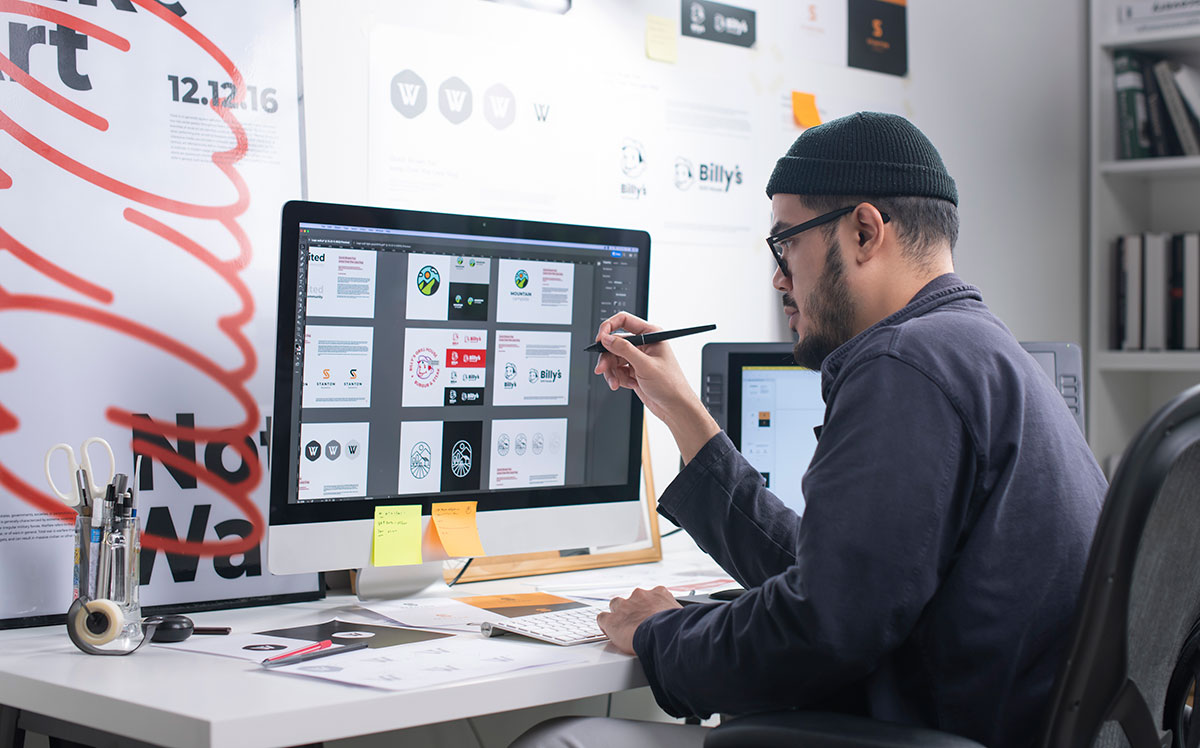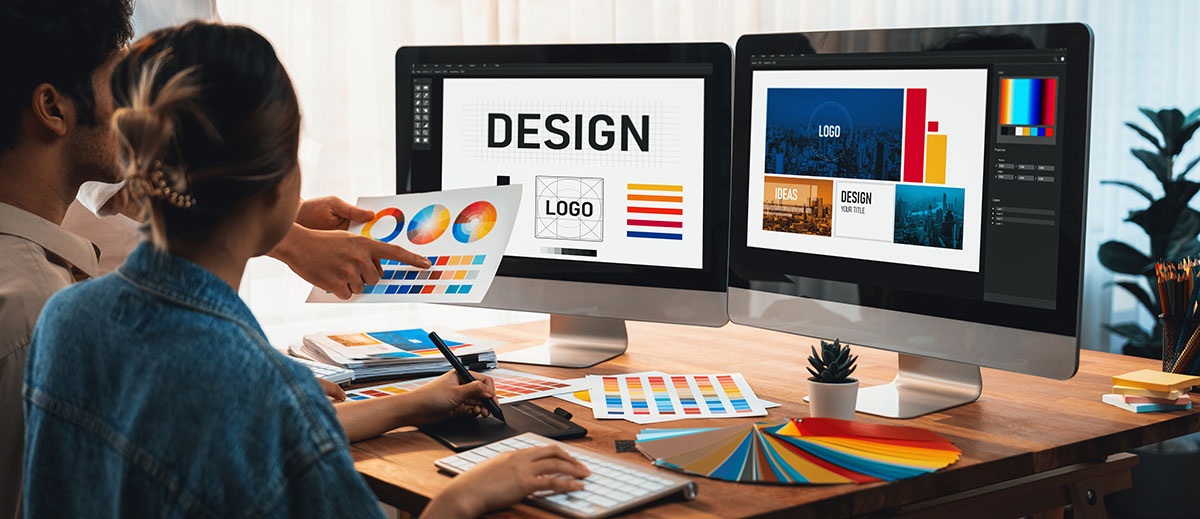Architectural Visions: 3D Agora's Dynamic Rendering Services

3D agora
June 24th, 2024

Step into a world where imagination knows no bounds and architectural dreams come to life in vibrant detail with artists 3D rendering your plans. Welcome to the realm of 3D Agora, where creativity thrives and visions take flight. Here, architects and designers find a trusted ally in turning their ideas into captivating realities. With a team of passionate artists and state-of-the-art technology, 3D Agora brings concepts to life with a touch of magic. Today we are taking a look at some of the professionals you can find on our platform.
Discovering the Thriving World of 3D Artists
At 3D Agora we are proud to have hundreds of capable and talented artists. In this bustling community of visionaries and creators, artists from around the globe come together to push the boundaries of possibility and redefine the art of digital expression. From seasoned professionals to emerging talents, each member brings a unique perspective and a wealth of inspiration to the table.
Exploring Opportunities in the 3D Artistic Community
Venturing into the dynamic realm of 3D artistry unveils a plethora of opportunities for aspiring and established artists alike. Within this vibrant community, individuals are welcomed to explore a myriad of creative pathways, from architectural visualization to character design and beyond. With the rapid advancement of technology and the ever-expanding demand for immersive digital experiences, the 3D artistic landscape presents a fertile ground for innovation and growth. Artists can find themselves collaborating with industry-leading professionals, contributing to groundbreaking projects, and carving out their niche in the evolving world of digital art.
As artists delve deeper into the 3D artistic community, they discover a wealth of resources and support networks designed to nurture their talents and facilitate their professional development. Online forums (like the 3D Agora subreddit), social media groups, and specialized platforms provide avenues for artists to connect with like-minded individuals, share their work, and gain valuable feedback from peers and mentors. Additionally, educational institutions and online learning platforms offer a wealth of tutorials, workshops, and courses tailored to the specific needs of aspiring 3D artists, empowering them to hone their skills and expand their knowledge base.
Unlocking the Potential of 3D Artistry
Beyond technical skills, unlocking the potential of 3D artistry necessitates a deep understanding of artistic principles and aesthetics. By studying the fundamentals of composition, lighting, and color theory, artists can imbue their creations with depth, emotion, and visual impact. Moreover, cultivating a strong sense of storytelling and narrative design enables artists to breathe life into their characters, environments, and narratives, captivating audiences and eliciting powerful emotional responses.
At the heart of unlocking the potential of 3D artistry lies a commitment to continuous learning, growth, and self-discovery. As artists navigate the complexities of the creative process, they are encouraged to embrace experimentation, failure, and iteration as essential steps on the path to mastery. By seeking inspiration from diverse sources, seeking feedback from peers and mentors, and remaining open to new ideas and perspectives, artists can unleash their full creative potential and make their mark on the ever-evolving landscape of digital art.
 Image by Filmstax, iStock
Image by Filmstax, iStock
Pioneering Artistic Directions: The Role of the Art Director
At the forefront of creative endeavors in the realm of 3D artistry stands the pivotal figure of the art director, whose visionary leadership shapes the artistic direction of projects and sets the stage for innovation and excellence. As pioneers of artistic direction, art directors bring together diverse talents and perspectives to craft cohesive and compelling visual narratives that resonate with audiences on a profound level. With a keen eye for detail and a deep understanding of artistic principles, they guide teams of artists and designers towards the realization of a shared vision, inspiring creativity, collaboration, and excellence at every turn.
Charting the Course: The Responsibilities of an Art Director
As the custodians of creative vision, art directors bear the weighty responsibility of charting the course of artistic projects, guiding them from conception to completion with clarity, purpose, and precision. At the outset of a project, art directors collaborate closely with clients, stakeholders, and creative teams to define the artistic direction and establish clear objectives and goals. Drawing upon their expertise in visual storytelling, aesthetic design, and project management, they develop comprehensive creative briefs and production plans that serve as roadmaps for the execution of the project.
Throughout the duration of a project, art directors oversee every aspect of the creative process, providing guidance, feedback, and direction to ensure that the artistic vision is realized with fidelity and excellence. They work closely with artists, designers, and other collaborators to ensure that their contributions align with the project's objectives and adhere to established artistic standards. Additionally, art directors play a vital role in managing resources, timelines, and budgets, ensuring that projects are delivered on time, within scope, and to the highest standards of quality.
Furthermore, art directors serve as advocates for artistic integrity and excellence, advocating for the needs and interests of creative teams and championing the importance of creativity and innovation in all aspects of the project. By fostering a culture of collaboration, accountability, and excellence, they inspire teams to push the boundaries of their craft and strive for artistic greatness. With their strategic leadership and unwavering commitment to excellence, art directors chart the course for success in the dynamic world of 3D artistry.
Setting the Vision: The Art Director's Influence
At the heart of the art director's influence lies the power to set the vision for creative projects and inspire teams to achieve greatness. By articulating a clear and compelling artistic vision, art directors provide a guiding light for artists and designers, empowering them to channel their talents and energies towards a shared goal. Through effective communication, collaboration, and mentorship, they foster a culture of creativity, accountability, and excellence, where each member of the team feels valued, empowered, and motivated to contribute their best work. With their unwavering commitment to excellence and their relentless pursuit of artistic innovation, art directors serve as catalysts for creativity and champions of artistic expression in the dynamic world of 3D artistry.
 Image by LanaStock, iStock
Image by LanaStock, iStock
Exploring Artistic Vision: The Essence of Art Direction
Delving into the realm of art direction unveils a rich tapestry of creative vision and strategic insight, where each decision and direction serves to shape the aesthetic landscape of a project. At its core, art direction is about exploring and refining the artistic vision that underpins a creative endeavor, guiding every aspect of the design process towards a unified and cohesive outcome. By harnessing the power of visual storytelling, symbolism, and metaphor, art directors breathe life into concepts and ideas, transforming them into immersive and engaging experiences that resonate with audiences on a profound level.
Defining Artistic Vision: A Closer Look
Within the realm of art direction lies the fundamental task of defining the artistic vision that will guide the creative direction of a project. This process involves a close examination of the project's objectives, themes, and intended audience, as well as an exploration of the visual language and aesthetic sensibilities that will best communicate the desired message. By distilling complex ideas and concepts into clear and concise visual concepts, art directors lay the groundwork for the entire design process, providing a roadmap for artists and designers to follow as they bring the project to life.
At the heart of defining artistic vision lies a commitment to authenticity, originality, and creative expression. Art directors strive to create visual experiences that resonate with audiences on a deep and meaningful level, capturing their imagination and eliciting emotional responses. Whether through the use of metaphor, symbolism, or allegory, art directors infuse their projects with layers of meaning and subtext, inviting viewers to engage with the work on multiple levels and discover new insights with each viewing. Through a combination of creative intuition, research, and experimentation, art directors refine their artistic vision until it aligns perfectly with the project's goals and objectives.
However, defining artistic vision is not without its challenges. Art directors must navigate a myriad of creative constraints, logistical considerations, and practical limitations as they seek to bring their vision to fruition. From budgetary constraints to technological limitations, art directors must be adept at finding creative solutions to overcome obstacles and push the boundaries of their craft. By embracing challenges as opportunities for growth and innovation, art directors inspire their teams to think outside the box, experiment with new techniques, and strive for artistic excellence in every aspect of their work.
Navigating Challenges: Art Direction in Practice
From tight deadlines and limited budgets to creative differences and technical constraints, art directors must be adept at overcoming obstacles and finding innovative solutions to ensure the success of their projects. By fostering a culture of resilience, collaboration, and problem-solving, art directors empower their teams to rise to the occasion, turning challenges into opportunities for growth and creativity.
One of the primary challenges of art direction is balancing artistic vision with practical considerations, such as budgetary constraints, client preferences, and technical limitations. Art directors must strike a delicate balance between creative expression and real-world constraints, finding creative solutions that meet the project's objectives while staying within budget and schedule. By leveraging their expertise in project management, negotiation, and communication, art directors effectively navigate these challenges, ensuring that their projects are delivered on time, within scope, and to the highest standards of quality.
Furthermore, art directors must also navigate the complexities of interpersonal dynamics and creative collaboration, fostering a positive and productive working environment where ideas can flourish and talents can thrive. By cultivating a culture of open communication, mutual respect, and constructive feedback, art directors empower their teams to share ideas, express their creativity, and contribute to the project's success. Through effective leadership, empathy, and emotional intelligence, art directors navigate the challenges of creative collaboration with grace and integrity, inspiring their teams to achieve greatness in every aspect of their work.
 Image by Ralf Hahn, iStock
Image by Ralf Hahn, iStock
Empowering Creativity: The Journey of a Creative Director
With a keen eye for detail and a passion for pushing the boundaries of creativity, creative directors empower artists and designers to channel their talents and energies towards a shared vision, inspiring them to create works of art that captivate, inspire, and provoke thought. Through their leadership, guidance, and unwavering commitment to artistic excellence, creative directors pave the way for groundbreaking innovation and creative expression in the dynamic world of design and artistry.
Leading the Charge: The Role of a Creative Director
At the helm of creative endeavors stands the creative director, whose visionary leadership sets the tone for the entire creative process. As the driving force behind artistic direction and innovation, creative directors bear the weighty responsibility of shaping the aesthetic direction of projects, guiding teams of artists and designers towards the realization of a shared vision. With a deep understanding of design principles, storytelling techniques, and audience engagement, they lead by example, inspiring their teams to push the boundaries of their craft and strive for artistic excellence in every aspect of their work. By fostering a culture of collaboration, experimentation, and continuous learning, creative directors empower their teams to unleash their full creative potential and make their mark on the world of design and artistry.
Fostering Innovation: The Creative Director's Approach
At the heart of the creative director's approach lies a commitment to fostering innovation and pushing the boundaries of artistic expression. By encouraging experimentation, risk-taking, and out-of-the-box thinking, creative directors create an environment where ideas can flourish, and creativity can thrive. They challenge the status quo, pushing their teams to explore new techniques, technologies, and artistic styles in pursuit of groundbreaking innovation and creative excellence. Through their leadership and guidance, creative directors inspire their teams to embrace change, adapt to new challenges, and push the boundaries of their craft, driving forward the evolution of design and artistry in the digital age.
 Image by CreateLab, iStock
Image by CreateLab, iStock
Designing Motion: The Artistry of a Motion Designer
In visual storytelling, motion designers are the architects of dynamic narratives, breathing life into static images and transforming them into captivating experiences. At the intersection of art and technology, motion designers harness the power of movement, rhythm, and timing to evoke emotion, convey meaning, and engage audiences on a visceral level. With a deep understanding of design principles, animation techniques, and storytelling fundamentals, they embark on a journey of creativity and innovation, shaping the visual landscape of films, advertisements, video games, and multimedia projects with their unique blend of artistry and technical skill.
Exploring Motion Design: Techniques and Applications
From kinetic typography and logo animations to visual effects and character animation, motion designers employ a diverse array of tools and techniques to bring their ideas to life. Through a combination of animation software, visual effects plugins, and motion capture technology, they create immersive visual experiences that captivate audiences and leave a lasting impression. Whether crafting sleek motion graphics for a brand identity or animating complex character performances for a film or video game, motion designers push the boundaries of creativity and innovation in every project they undertake.
Creating Dynamic Visuals: The Motion Designer's Toolbox
From industry-standard animation software like Adobe After Effects and Cinema 4D to cutting-edge motion capture technology and real-time rendering engines, motion designers have access to a wealth of tools and resources that enable them to create dynamic visuals with ease. Additionally, motion designers draw inspiration from a variety of sources, including traditional animation principles, graphic design trends, and cinematic techniques, to craft compelling visual narratives that resonate with audiences across diverse platforms and mediums. By mastering their craft and embracing new technologies and techniques, motion designers continue to push the boundaries of what is possible in the world of visual storytelling, creating dynamic and engaging experiences that inspire, entertain, and captivate audiences around the world.
 Image by FluxFactory, iStock
Image by FluxFactory, iStock
Embracing Graphic Design: Where Art Meets Function
Graphic design is more than just a visual medium; it's a dynamic fusion of creativity and practicality, where artistry meets functionality to communicate ideas, evoke emotions, and engage audiences in meaningful ways.
The world of graphic design is a vibrant tapestry of creativity and innovation, where the boundaries between art and design blur, and new possibilities emerge at every turn. At its essence, graphic design is about finding the delicate balance between form and function, aesthetics and usability, to create designs that are both visually compelling and highly effective. By drawing inspiration from diverse artistic movements, cultural influences, and design trends, graphic designers explore new avenues of expression and experimentation, pushing the boundaries of their craft and challenging conventional norms. Through a combination of artistic intuition, technical expertise, and creative problem-solving, they navigate the complexities of visual communication, transforming abstract concepts into tangible, impactful designs that resonate with audiences on a profound level.
Graphic design serves as a universal language that transcends barriers of culture, language, and geography, communicating messages with clarity, precision, and impact. Whether through the use of symbolism, metaphor, or abstraction, graphic designers distill complex ideas into simple, easily digestible visual elements that engage viewers and spark curiosity. By harnessing the power of color, typography, and composition, they create visual narratives that convey emotion, evoke empathy, and inspire action. From corporate branding and advertising campaigns to editorial layouts and environmental graphics, graphic design shapes the way we perceive and interact with the world around us, enriching our lives with beauty, meaning, and purpose.